A pain-free neck is similar to our carefree youth — we don’t appreciate it until it’s gone. Neck and back pain can make life difficult, affecting your social life, family time, hobbies, and work productivity.
You’re probably familiar with neck and back pain if you’re reading this. This guide can help you understand the anatomy of your cervical spine, different causes, and types of back and neck pain, and learn more about common neck and back pain treatments, whether you’ve just woken up with a whopper of a crick in your neck, sustained an injury, or have been dealing with chronic neck or back pain.
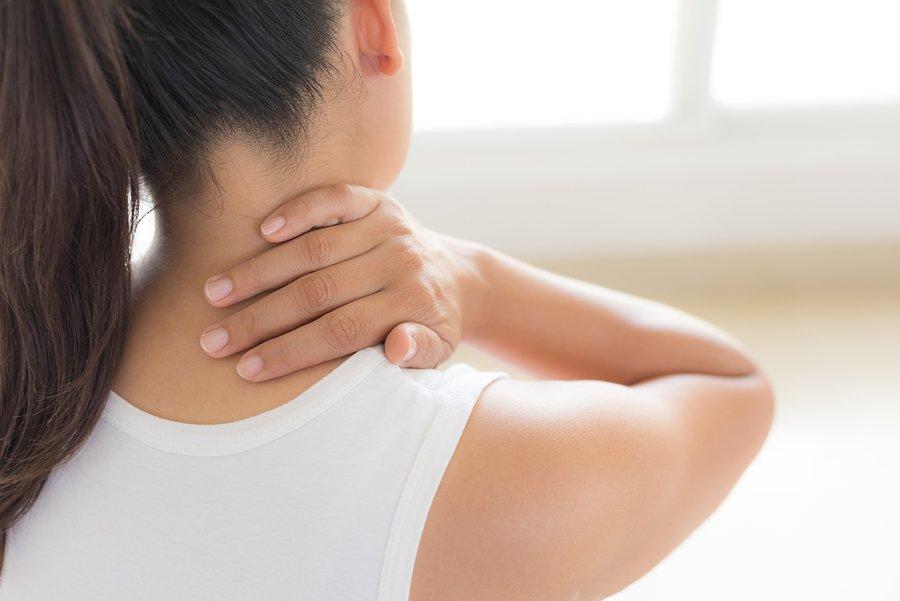
What is Neck Pain?
The bones, ligaments, and muscles of your neck support and move your head. Neck pain or stiffness can be caused by abnormality, inflammation, or injury.
Many people experience occasional neck pain or stiffness. It is often caused by poor posture, overuse, or sleeping in an awkward position. A fall, contact sports, or whiplash injury sometimes causes neck pain.
Neck pain is usually not serious and can be resolved within a few days. However, in some cases, neck pain can indicate a serious injury or illness that necessitates medical attention.
Seek medical attention immediately if you have neck pain that lasts more than a week, is severe, or is accompanied by other symptoms.
Types of Neck Pain
There are various types of neck pain. Some people have only one type, while others have a combination.
- Central Neuropathic Pain
A stroke, spinal cord injury, or multiple sclerosis are the most common causes. It could also be the result of a central nervous system injury, such as a traumatic brain/spinal cord injury or infection (e.g., abscess, encephalitis, myelitis)
- Mechanical Neck Pain
This discomfort is caused by the spine and its supporting structures (e.g., muscles, ligaments, bones, or cartilage). Mechanical pain is typically caused by poor posture, neck strain from work or sporting/physical activities, and even stress.
- Neuropathic Neck Pain
Neuropathic neck pain is caused by nerves or nerve roots in the cervical spine and can be caused by conditions such as a herniated disc that presses against a nearby nerve or other causes of nerve compression.
Symptoms of Neck Pain
Neck pain symptoms may include:
- Sharp pain
Sharp or “stabbing” pain in one area of the neck may be experienced.
- Stiff neck
People who suffer from neck pain frequently describe their neck as “stiff” or “stuck.” Neck pain can sometimes lead to a reduction in range of motion.
- Radiating pain or numbness
The pain in your neck may spread to your head, trunk, shoulder, and arms. If a nerve is compressed in your neck, you may experience numbness, tingling, or weakness in your arms or hands. A pinched nerve in the neck can cause pain that feels like a burning or sharp pain that travels down the arm. If you have this symptom, consult a doctor.
- Pain when moving
Moving, twisting, or extending your cervical spine from side to side or up and down can aggravate neck pain.
- Pain when palpated
If you palpate (physically examine) your cervical spine, your neck pain may worsen.
- Headache
A cervicogenic headache is caused by pain that begins in your neck. A migraine headache may also be accompanied by neck pain.
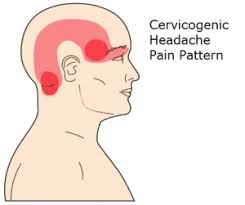
- Muscle spasms
Muscle spasms are the sudden stiffening of one or more muscles in your body. There is frequently no known cause, and they can be extremely unpleasant. When it happens in the neck, it usually causes pain and stiffness down one side, making turning your head difficult.
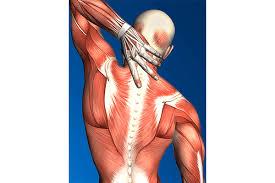
Reasons for Neck Pain
Neck pain or stiffness can occur for several reasons.
- Muscle tension and strain
This is typically caused by activities and behaviors such as:
- Inadequate posture
- Working at a desk for an extended period of time without changing positions
- Sleeping with your neck in an incorrect position
- During exercise, jerk your neck
- Heart attack
Neck pain is another sign of a heart attack. It is frequently associated with other symptoms of a heart attack, such as:
- Arm or jaw pain
- Sweating
- Nausea
- Shortness of breath
- Vomiting
- Injury
The neck is especially vulnerable to injury in falls, car accidents, and sports, where the muscles and ligaments of the neck are forced to move beyond their normal range.
The spinal cord may be damaged if the neck bones (cervical vertebrae) are fractured. Whiplash is a term used to describe a neck injury caused by a sudden head jerking.
- Mental stress
Tightening your neck muscles as a result of stress can result in neck pain and stiffness. Many people who tighten these muscles when stressed or agitated are unaware of it until their neck begins to hurt.
- Meningitis
The inflammation of the thin tissue that surrounds the brain and spinal cord is known as meningitis.
- Nausea
- Fever
- Vomiting
- Headache
- Sensitivity to light
- Stiff neck
Meningitis can be fatal and is considered a medical emergency in people with it. If you have meningitis symptoms, seek medical attention right away.
- Aging
Natural wear and tear can cause parts of your cervical spine to deteriorate or degenerate as you age, causing pain. Neck pain can be caused by degenerative conditions such as osteoarthritis and spinal stenosis (narrowing your spine’s spaces). Stress and repeated movements can cause the discs in your spine to weaken over time, resulting in a herniated disc or pinched nerve.
- Other causes
The following are some other causes of neck pain:
- Osteoporosis weakens the bones and can result in minor fractures. This condition is most commonly found in the hands or knees but can also occur in the neck.
- Fibromyalgia is a condition that causes widespread muscle pain, particularly in the neck and shoulders.
- Spinal stenosis happens when the spinal column narrows. It puts pressure on the spinal cord or nerve roots as they exit the vertebrae. This can result from chronic inflammation caused by arthritis or other conditions.
- Rheumatoid arthritis causes joint pain, swelling, and bone spurs. Neck pain can occur when occurring in the neck area.
- When a disc protrudes due to trauma or injury, it can strain the spinal cord or nerve roots. This is referred to as a herniated cervical disc. Also, a ruptured or slipped disc.
Neck stiffness or pain can occur in rare cases as a result of the following:
- Abscesses
- Infections
- Cancer of the spine
- Tumors
- Congenital abnormalities
Diagnosis of Neck Pain
Your doctor will do the following to assess your neck pain:
- Inquire about your medical history.
- To determine the source of your pain, ask the following questions:
- What activities led up to the pain?
- When did the pain begin?
- What have you tried to alleviate your neck pain?
- What causes the pain to be less or more intense?
- Is the pain radiating or spreading to other parts of the body?
- Perform a physical examination to determine whether your pain is caused by a muscle, a joint, or a ligament. This examination will include the following:
- An analysis of your neck mobility, as well as the strength and sensations in your neck and arms
- Palpating/feeling your spine’s curvature, vertebral alignment, and muscle spasms
- Take note of your posture.
- Diagnostic testing rules out specific conditions (e.g., infection, fracture, or tumor).
Imaging studies can assist your doctor in narrowing down the source of your neck pain. An X-ray can reveal disc space narrowing, fracture, osteophyte formation, and osteoarthritis. An X-ray will not show soft tissue such as muscles, ligaments, or intervertebral discs; an MRI or CT scan will be required.
How is Neck Pain Treated?
The goal of treatment is to alleviate your pain and improve your neck movement. Most causes of neck pain improve over time and can be managed at home. Your provider will recommend treatments to alleviate your symptoms, such as:
- Pain medications and muscle relaxers:
Nonsteroidal anti-inflammatory drugs (NSAIDs) to relieve neck pain and inflammation and muscle relaxants to aid in the healing of neck muscles are common first-line treatments for neck pain.
- Manipulation
Manipulation is a manual therapy in which body parts are adjusted to treat stiffness. It can sometimes be uncomfortable, so it’s critical to understand what’s happening. Make sure you talk to your therapist about your condition and explain the symptoms you’ve been having. This will allow them to make a more informed decision about which treatments they will likely benefit from.
- Injections
A long-acting local anesthetic or steroid injection may help in a very small percentage of cases, especially if you have ongoing pain in the back of your head or arm. The injection is usually administered into your neck’s small facet joints. These injections are typically administered in an x-ray department so that the specialist can precisely position the needle.
- Transcutaneous electrical nerve stimulation (TENS) unit:
A TENS unit sends a low-level electrical current through your skin near your nerves, disrupting the pain signal and causing discomfort. Before using a TENS unit, always consult with your doctor.
- Physical therapy:
This technique may not be appropriate for you if you have spinal issues like slipped discs.
You could work with a physical therapist or a fitness trainer to learn exercises and movements that will strengthen and stretch the muscles and tendons in your neck.
- Collars
Some people find a special collar useful for supporting the neck in cases of more serious or complex health problems. They are only sometimes required.

- Alternative therapies:
Your provider may suggest acupuncture to relieve pain or massage to help loosen tight muscles that are causing you discomfort. You could go to an osteopath or chiropractor to get your spine aligned.
- Surgery:
The majority of causes of neck pain do not necessitate surgery. However, if one or more of the vertebrae in your spine has shifted out of place or are putting pressure on your nerves, you may require surgery.
If your pain is severe, you may require the services of a spine or pain specialist.
How to ease neck pain at home?
In addition to taking pain relievers, you can relieve neck pain at home by doing the following:
- Using heat and ice packs

A heat pack applied to your neck can help relieve pain. You can use a microwavable wheat bag, a hot-water bottle, or a reusable heat pad, which are available at pharmacies and sporting goods stores. An ice pack or even a bag of frozen peas can be beneficial.
- Massage
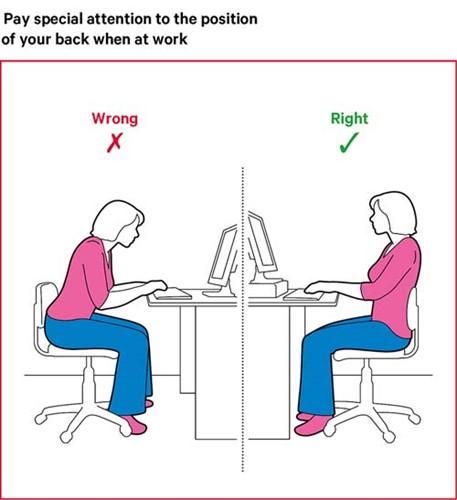
A gentle massage of your neck muscles, especially with aromatic oils, is often beneficial. However, you should consult a healthcare professional before using these oils because they are not suitable for everyone. You should exercise extra caution if you are pregnant or have a condition like epilepsy.
- Relaxation
Neck pain can be exacerbated by stress. Learning how to relax your neck muscles is one way to minimize the effects of stress. Strive for a healthy balance of relaxation and exercise.
- Posture
Pain and stiffness can be caused by the following:
- Poor standing posture
- Staying in the same position for an extended period A bed that is too soft or too hard
- A pillow that is either too hard or too soft.
- Poor work posture.
Keep your feet flat on the floor and your knees slightly lower than your hips when sitting. If it will make you more comfortable, use a footrest.
- Exercise
A brief period of rest may be beneficial to alleviate pain and discomfort. However, to avoid weakening your neck muscles and stiffening your joints, you should rest for as little as possible, preferably no more than a day or two. Begin gentle stretches and neck movements as soon as possible to help the muscles and ligaments relax and relieve your pain and stiffness.
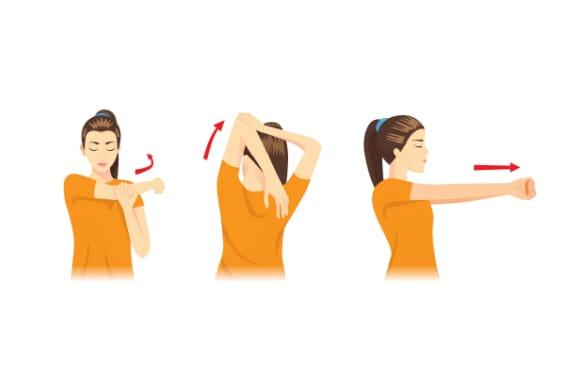
- Sleep
A pillow that is too firm or thick can aggravate neck pain. Changing the number or placement of pillows may be beneficial. In a neutral position, your head and neck should be supported, so your head is level with your body. A soft or molded pillow may be useful, or a supportive roll inside your pillow case can keep the natural hollow between your neck and shoulders.
If your mattress does not provide adequate back support, it can aggravate neck pain. If it’s old or uncomfortable, consider replacing it.
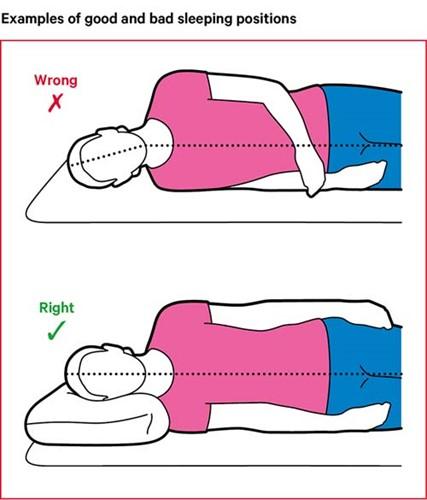
When should I call the doctor if I have neck pain?
See a doctor if your neck pain interferes with your work or daily activities. Neck pain can be a sign of a medical emergency in rare cases.
Seek immediate medical attention if you are experiencing neck pain:
- Involves a loss of bowel or bladder control.
- Persists whether you’re moving or staying still.
- Doesn’t improve after one week.
- Over-the-counter medications are ineffective.
- As a result of an accident.
- Chills, fever, and unexplained weight loss accompany it.
- It manifests as numbness or tingling in your arms, shoulders, or legs.
- It involves a headache, dizziness, nausea, or vomiting.
- It manifests as leg weakness or loss of coordination in your arms or legs.
How can I prevent neck pain?
Simple changes to your daily routine may be beneficial. Consider attempting to:
- Maintain proper posture. Make sure your shoulders are in a straight line over your hips, and your ears are directly over your shoulders when standing or sitting.
- Get up, move around, and stretch your neck and shoulders if you travel long distances or work at a computer for long periods.
- Adjust the height of your desk, chair, and computer, so the monitor is at eye level.
- Quit smoking if you smoke. Smoking increases the likelihood of developing neck pain.
- Carrying heavy bags with straps over your shoulder is not recommended. The weight can cause neck strain.
- Sleep in a good position. Your head and neck should align with the rest of your body. Place a small pillow beneath your neck.
- Increase your activity level if you don’t move much.
What is Back Pain?
Various injuries and conditions can cause back pain or diseases, the most common of which is an injury to the back’s muscles or tendons.
The Intensity of pain can range from mild to severe. In some cases, pain makes it difficult or impossible to walk, sleep, work, or perform daily tasks.
Lower back pain usually improves with rest, pain relievers, and physical therapy (PT). Cortisone injections and hands-on treatments (such as osteopathic or chiropractic manipulation) can help with pain relief and healing. Some back injuries and conditions necessitate surgical intervention.
Types of Back Pain
Back pain is classified in the following ways by doctors and researchers:
- Acute back pain occurs suddenly and lasts for a few days to a few weeks.
- Subacute back pain can strike suddenly or gradually and last for 4 to 12 weeks.
- Chronic back pain can develop quickly or slowly and last for more than 12 weeks.
Symptoms of Back Pain
The severity of back pain varies from person to person. You may experience the following symptoms depending on the type, cause, and location of your back pain:
- Lifting and bending cause more pain.
- Pain worsens when resting, sitting, or standing.
- Back discomfort that comes and goes.
- Back pain lessened with activity and stiffness in the morning.
- Radiating pain from the back into the buttocks, leg, or hip.
If your back pain does not improve after a few weeks or if any of the following symptoms occur, you should consult a doctor:
- Numbness and tingling are experienced.
- Severe back pain that is not alleviated by medication (see Treatment section).
- Back pain following a fall or injury.
- Back pain accompanied by:
- Urination problems.
- Leg swelling, pain, or numbness.
- Fever.
- You have lost weight that you did not intend to lose.
Reasons for Back Pain
Various factors, including mechanical or structural spine problems, inflammatory conditions, and other medical conditions, can cause back pain.
- Mechanical/Structural Problems
Back pain can result from mechanical or structural problems in the spine, discs, muscles, ligaments, or tendons.
- Sprain: an injury to the ligaments that support the spine, often caused by improper twisting or lifting.
- Strain: a muscle or tendon injury.
- Degenerative disc disease occurs when the discs between the vertebrae of the spine degrade with age.
- Discs that have herniated or ruptured: the discs compress and irritate nearby nerves. This is common at the lumbar level.
- Spondylolisthesis is a condition in which a vertebra in the spine slips out of place.
- A narrowing of the spinal column that puts pressure on the spinal cord and nerves is known as spinal stenosis.
- Vertebral fractures.
- Scoliosis or other congenital spine changes.
- Inflammatory Conditions
- Ankylosing spondylitis, a type of spinal arthritis, can cause back pain.
- Other types of spine inflammatory arthritis.
- Other Medical Conditions
- Osteoporosis can result in painful vertebral fractures.
- Fibromyalgia is a condition characterized by widespread muscle pain and fatigue.
- Infections or kidney stones.
- Endometriosis is the accumulation of uterine tissue outside of the uterus.
- Infections of the spine’s bones, or the discs between these bones, can cause pain.
- Tumors that develop on the spine or other areas of the back in rare cases.
- Pregnancy.
Diagnosis of Back Pain
A doctor can usually diagnose back pain after asking about symptoms and performing a physical exam.
If any of the following conditions exist:
- Back pain appears to be the result of an injury.
- There could be an underlying cause that requires treatment.
- The pain lasts for a long time.
An X-ray, MRI, or CT scan can provide information about the condition of the back’s soft tissues.
How is Back Pain Treated?
A doctor may prescribe one or both medications or physical therapy if home remedies do not relieve back pain.
- Medication:
Back pain that does not respond well to over-the-counter pain relievers may necessitate using a prescription NSAID. Narcotics such as codeine or hydrocodone may be prescribed for short periods. The doctor must closely monitor these. Muscle relaxants may be used in some cases.
Antidepressants, such as amitriptyline, may be prescribed, but research into their efficacy is ongoing, and evidence is conflicting.
- Cognitive behavioral therapy (CBT):
CBT can assist in managing chronic back pain by encouraging new ways of thinking. It could include relaxation techniques and methods for maintaining a positive attitude. According to studies, patients who receive CBT tend to become more active and exercise, resulting in a lower risk of back pain recurrence.
- Physical therapy:
Heat, ice, ultrasound, electrical stimulation, and some muscle-release techniques may help relieve pain in the back muscles and soft tissues.
The physical therapist may introduce back, and abdominal muscle flexibility and strength exercises as the pain subsides. Techniques for improving posture are also beneficial.
To prevent back pain recurrence, the patient will be encouraged to practice the techniques regularly, even after the pain has subsided.
- Botox:
According to preliminary research, Botox (botulism toxin) may lessen pain by paralyzing sprained muscles in spasms. These injections work for about 3 to 4 months.
- Cortisone injections:
If other options fail, these may be injected into the epidural space, which surrounds the spinal cord. Cortisol is an anti-inflammatory medication. It aids in the reduction of inflammation around the nerve roots. Injections may also be used to numb areas suspected of causing pain.
- Traction:
To stretch the back, pulleys and weights are used. This may result in a herniated disc returning to its original position. It can also help pain relief, but only when traction is used.
How to ease Back pain at home?
Back pain usually goes away on its own after a few weeks. There are some things you can do to hasten your recovery.
- Continue your daily activities and stay active.
- Taking an anti-inflammatory medication such as ibuprofen – paracetamol is not recommended for back pain on its own, but it can be combined with another pain reliever.
- To reduce pain and swelling, wrap an ice pack (or a bag of frozen peas) in a tea towel.
- To relieve joint stiffness or muscle spasms, wrap a heat pack (or hot water bottle) in a tea towel.
- Try some back pain exercises and stretches.
- Resting from strenuous activity can help, but moving around will help with stiffness, pain, and muscle weakness.
When should I call the doctor if I have Back pain?
Most back pain improves gradually with at-home treatment and self-care, usually within a few weeks. Contact your doctor if you have back pain that:
- Lasts for at least a few weeks
- It is severe and does not get better with rest
- Spreads down one or both legs, particularly if the pain is below the knee
- This condition causes weakness, numbness, or tingling in one or both legs.
- It is accompanied by unexplained weight loss.
How can I prevent Back pain?
Improving one’s physical condition and learning and practicing proper body mechanics may aid in the prevention of back pain.
To keep your back healthy and strong, do the following:
- Regular low-impact aerobic activities that do not strain or jolt the back can increase back strength and endurance and allow the muscles to work more efficiently.
- Increase your muscle strength and flexibility. Exercises that strengthen the abdominal and back muscles condition these muscles so that they work collectively to support the back.
- Keep a healthy weight.
- Smoking increases the likelihood of developing low back pain. Because the risk rises with the number of cigarettes smoked daily, quitting should help reduce it.
Final Words
Back and neck pain is a common health problem that induces limited activity and difficulty carrying out daily tasks. Anyone experiencing severe or sudden back pain should seek medical attention.
People can reduce back and neck pain by making lifestyle changes, such as switching shoes and changing their workstations. A healthy diet and adequate sleep help alleviate lower back and neck pain.
The Couple Test

Bonus: After completing The Couple Test, you’ll get access to our Rekindle the Flame Plan for FREE! Seriously, it’s all FREE!
Advertise With Us! Low Prices! Learn more…
Please use social media buttons below to share the love
